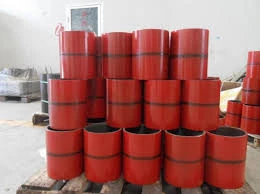- Afrikaans
- Albanian
- Amharic
- Arabic
- Armenian
- Azerbaijani
- Basque
- Belarusian
- Bengali
- Bosnian
- Bulgarian
- Catalan
- Cebuano
- Corsican
- Croatian
- Czech
- Danish
- Dutch
- English
- Esperanto
- Estonian
- Finnish
- French
- Frisian
- Galician
- Georgian
- German
- Greek
- Gujarati
- Haitian Creole
- hausa
- hawaiian
- Hebrew
- Hindi
- Miao
- Hungarian
- Icelandic
- igbo
- Indonesian
- irish
- Italian
- Japanese
- Javanese
- Kannada
- kazakh
- Khmer
- Rwandese
- Korean
- Kurdish
- Kyrgyz
- Lao
- Latin
- Latvian
- Lithuanian
- Luxembourgish
- Macedonian
- Malgashi
- Malay
- Malayalam
- Maltese
- Maori
- Marathi
- Mongolian
- Myanmar
- Nepali
- Norwegian
- Norwegian
- Occitan
- Pashto
- Persian
- Polish
- Portuguese
- Punjabi
- Romanian
- Russian
- Samoan
- Scottish Gaelic
- Serbian
- Sesotho
- Shona
- Sindhi
- Sinhala
- Slovak
- Slovenian
- Somali
- Spanish
- Sundanese
- Swahili
- Swedish
- Tagalog
- Tajik
- Tamil
- Tatar
- Telugu
- Thai
- Turkish
- Turkmen
- Ukrainian
- Urdu
- Uighur
- Uzbek
- Vietnamese
- Welsh
- Bantu
- Yiddish
- Yoruba
- Zulu
Bull Plug Size Specifications and Measurements for Various Applications
Understanding Bull Plug Dimensions A Comprehensive Guide
Bull plugs are essential components in various industries, particularly in equipment maintenance and hydraulic systems. Their primary function is to serve as a sealing mechanism, ensuring that pressurized fluids do not leak from pipes or valves. To effectively perform this role, understanding bull plug dimensions is crucial for both installation and maintenance.
What is a Bull Plug?
A bull plug, often referred to as a pipe plug, is a cylindrical device designed to fill the opening of a pipe or valve. It is typically made from durable materials such as stainless steel, brass, or plastic, offering the flexibility needed for different applications. Bull plugs are available in various dimensions, which directly impact their application suitability.
Key Dimensions of Bull Plugs
1. Diameter The diameter of a bull plug is one of its most critical measurements. It must match the inner diameter of the pipe or valve it is intended to seal. Commonly, bull plugs come in sizes ranging from ¼ inch to several inches, accommodating a wide range of pipe sizes. It is important to choose the correct diameter to ensure a tight fit and prevent leaks.
2. Length The length of a bull plug can vary significantly depending on its intended use. Generally, a longer bull plug provides a better sealing surface, while a shorter one may be more suitable for applications with limited space. Typically, lengths can range from 1 inch to several inches, and choosing the right length can impact the effectiveness of the seal.
bull plug dimensions

3. Thread Type Bull plugs can have different thread types, such as NPT (National Pipe Thread), BSP (British Standard Pipe), or others. The thread type must correspond with the threading of the pipe or valve to ensure a secure connection. Mismatched threads can lead to leaks and system failures.
4. Material and Finish The material used in manufacturing bull plugs significantly influences their durability and performance under pressure. Stainless steel is commonly used for its corrosion resistance, while brass offers a good balance of strength and cost-effectiveness. The finish (e.g., polished or matte) can also affect the plug’s sealing capabilities and aesthetic appeal.
Importance of Correct Dimensions
Choosing the correct dimensions for a bull plug is not merely a matter of convenience; it is essential for safety and efficiency in operations. Installing an improperly sized plug can lead to fluid leakage, which may result in equipment damage, increased maintenance costs, and potential safety hazards.
Conclusion
Understanding bull plug dimensions is vital for anyone involved in engineering, plumbing, or maintenance roles. Accurate knowledge of diameter, length, thread type, and material can dramatically influence the effectiveness of a bull plug in sealing applications. By selecting the correct dimensions, operators can ensure that their systems remain leak-free, safe, and efficient. Whether you are purchasing a bull plug for industrial use or home plumbing projects, paying attention to these specifications will lead to better results and lasting solutions.
-
Tubing Pup Joints: Essential Components for Oil and Gas OperationsNewsJul.10,2025
-
Pup Joints: Essential Components for Reliable Drilling OperationsNewsJul.10,2025
-
Pipe Couplings: Connecting Your World EfficientlyNewsJul.10,2025
-
Mastering Oilfield Operations with Quality Tubing and CasingNewsJul.10,2025
-
High-Quality Casing Couplings for Every NeedNewsJul.10,2025
-
Boost Your Drilling Efficiency with Premium Crossover Tools & Seating NipplesNewsJul.10,2025







